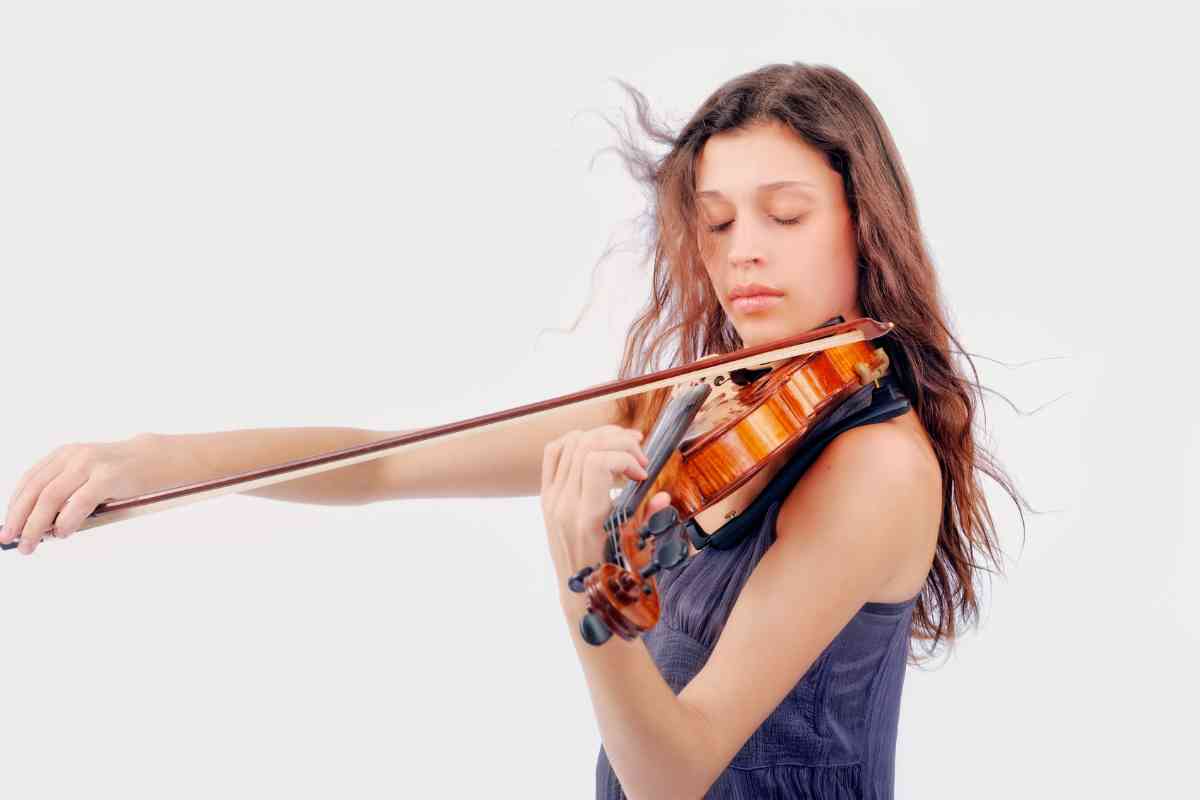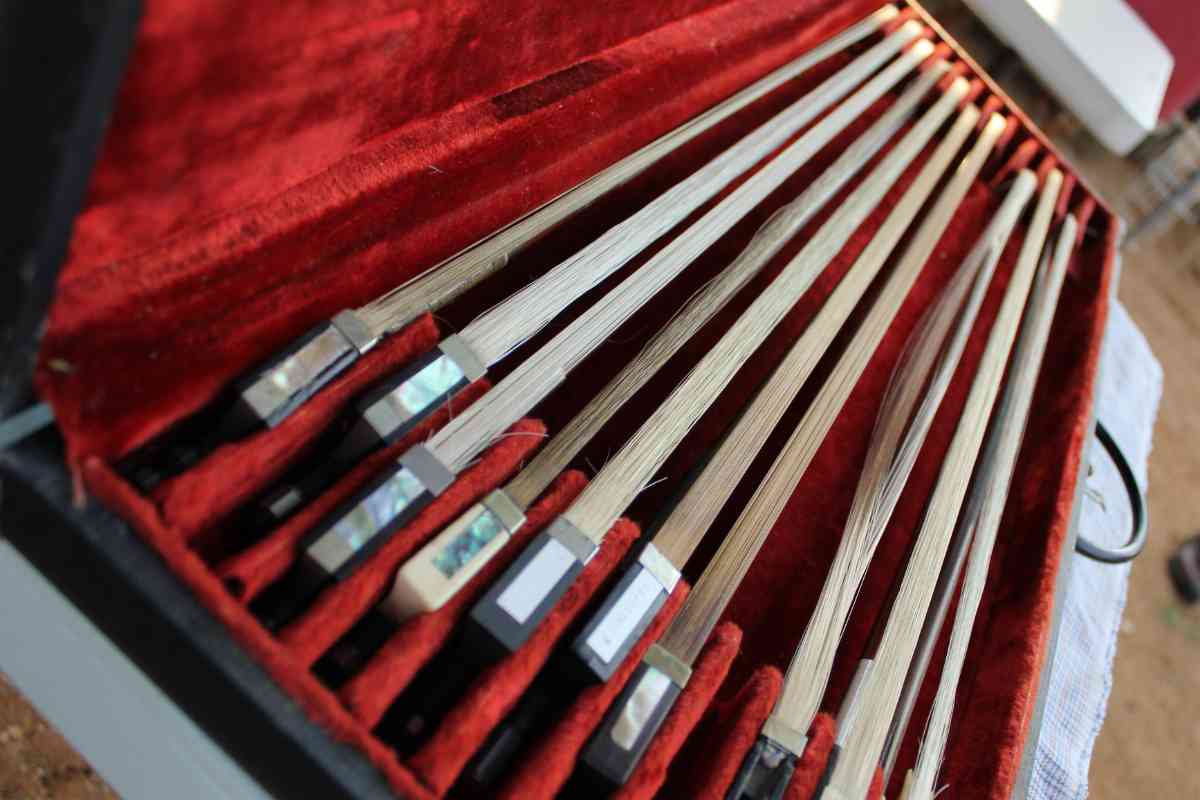With its distinctive tone and smooth dynamics, the fiddle is one of the most interesting stringed instruments. Originating from the bowed lira, the fiddle has been used in various musical styles and genres.
If you want to play the fiddle, you’ll need three key things – patience, perseverance, and effective drills and techniques that you can practice to improve your ability. Developing the bowing technique, dexterity, and your musical ear are all required to learn the fiddle.
The fiddle has a reputation for being a complex instrument to learn, but in reality, if you’re willing to put in the time and effort, it isn’t any harder than other stringed instruments. It’s a very rewarding instrument to play due to its rich tonality and unique sound.
In this article, we’ll provide you with various drills and techniques to implement into a practice routine to improve your fiddle playing immediately.
How to Play the Fiddle
Learning the fiddle is a complex process, but if you take it step by step and practice diligently, you can make progress quickly. The first thing you need to do is choose a particular fiddle that is well suited to you.
When choosing a fiddle, you’ll need to consider factors such as the size and curvature of the neck, the number of strings, and the type of sound you’re looking for. It’s also important to consider your budget when buying a fiddle.
Once you have a fiddle, it’s time to start learning how to play it. Playing the fiddle requires developing techniques such as bowing, vibrato, and shifting. Learning to read music is also important if you want to play with other musicians.
A consistent practice routine is also important when learning to play the fiddle. It would be best if you aimed to practice for at least one hour a day and make sure that you’re focusing on the techniques mentioned above.
You can also use various drills to help you improve your skills, which we’ll discuss shortly.

The Basics: Holding & Tuning a Fiddle
Before you attempt any drills or exercises on your fiddle, it’s essential to ensure you’re holding it correctly. The fiddle should be held between your chin and shoulder, with the strings facing away from you.
Ensure that your left hand is positioned in the middle of the neck and that your right hand is slightly under the bridge.
Your right arm should be relaxed when bowing, while your left hand will be used to press down on the strings. You may need to adjust the angle of your fiddle slightly as you play different notes.
Once you’ve become accustomed to holding the fiddle properly, you’ll need to check that it is in tune. It’s advisable to tune your fiddle before playing it so that you can develop your musical ear.
To tune a fiddle, you’ll need a tuning device such as a tuner or pitch pipe. You can then use this to help you tune the four strings on your fiddle.
A fiddle is tuned similarly to a guitar – by adjusting the tuning pegs on each string located at the end of the neck. As you tune, make sure to listen carefully, as this will help you develop a musical ear and become more accurate in your playing.
Drills & Techniques for Learning the Fiddle
If you ask any accomplished musician how they reached their current skill level on their chosen instrument, they’re likely to mention the importance of repetitively drilling specific techniques and exercises that challenge their abilities.
Here are some of the most effective drills and techniques that you can use to improve your fiddle playing:
- Start by playing a piece slowly and focusing on your form. Pay close attention to how you’re holding the bow, the pressure you’re using, and other techniques such as vibrato and shifts.
- Learning to keep time is essential to any musician’s skill set. Regularly practice playing a particular piece and keep track of your timing by tapping, counting aloud, or playing along to a metronome.
- To become comfortable with changing bows while playing, you can use simple drills such as alternating between bow strokes after each note.
- Scales and arpeggios are other essential exercises for developing your technique and improving your dexterity. Practice playing scales in different positions to become more familiar with the fretboard.
- Playing something from memory requires a great deal of practice, but it can be gratifying once you’ve mastered it. To improve your memorization skills, start by playing a piece once and then try to play it again without any reference material.
Having a consistent practice routine and focusing on key techniques such as bow changes and memorization will help you become a more well-rounded fiddle player.

Developing Your Bowing Technique
The bowing technique is arguably the most important aspect of playing the fiddle. It can take some time to develop a good bowing technique, but with practice and dedication, you’ll be able to master it.
The three main elements of bowing are pressure, speed, and angle. Try experimenting with different pressures and angles when you bow to get the best sound from your fiddle – this will help you find the right balance between a louder and quieter sound.
When you first start out, using long bows with wide arcs can be helpful. As your technique improves, you can focus on smaller bow strokes and play shorter notes grouped together.
You should also practice vibrato when bowing, as this will add an extra level of expression to your playing. Experiment with different types of vibratos, such as trills and turns, to broaden your range.
It’s important to be aware of the sound that you’re producing when playing the fiddle. Listen closely to each note and focus on achieving a balanced and consistent tone.
Advanced Drills and Techniques
In the initial stages of learning an instrument, musicians often see lots of progress in a short period. Once you reach a certain skill level, you’ll need to add more advanced drills into your practice routine.
Practicing double stops is a great way to improve your fiddle playing. A double stop is a technique where two notes are played simultaneously, either in unison or at different octaves. This requires precise bow control and the ability to switch between notes quickly.
You can also increase your speed by shifting into higher positions on the fingerboard. Start slowly and gradually build up your speed as you become more comfortable with the position shifts.
Another advanced technique you can practice, which can add flair to your fiddle playing, is ornamentation. This includes techniques such as grace notes, trills, and turns. With practice, you can use ornaments to add subtle embellishments to your playing.
Shifting is another challenging fiddle technique that will enhance your skills significantly. Shifting is when you move up or down the fingerboard between notes. This requires precision and accuracy, so start slowly and practice shifting until it feels natural.
Learning Through Listening
One of the most effective ways to improve your fiddle playing is to listen to other accomplished musicians and learn from them. The same goes for any instrument from drums to the piano – choose musicians that inspire you and try to figure out how they get their signature sound.
By listening to other fiddle players and learning their material, you will pick up new techniques and be able to emulate their style. This will help you develop your unique sound and give you a greater understanding of the instrument.
When listening to fiddle music, try transcribing songs by ear. This is a great way to test your skill level and expand your repertoire.
Finally, practice playing along to recordings of songs. By mimicking the sound and phrasing of other musicians, you will better understand how your instrument works and refine your technique.
Related Questions
Is the fiddle the same as the violin?
Yes, the fiddle and violin are the same instruments. The term “fiddle” is generally associated with folk music, while “violin” is used for classical music. However, both terms refer to the same four-stringed instrument.
Which type of bow should you use when playing the fiddle?
When playing the fiddle, it is best to use a horsehair bow. This type of bow is lightweight and produces a better sound than synthetic bows. It is also easier to control the pressure when using a horsehair bow.
What are the different types of fiddle vibrato?
There are two main types of vibratos on a fiddle. These are trills, which involve shaking the finger back and forth quickly between two notes to create a wavering effect, and turns, which involve moving the finger side-to-side while playing a single note.
